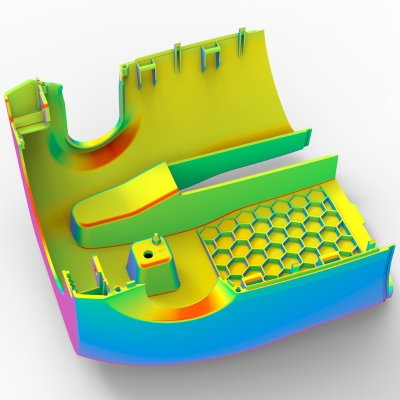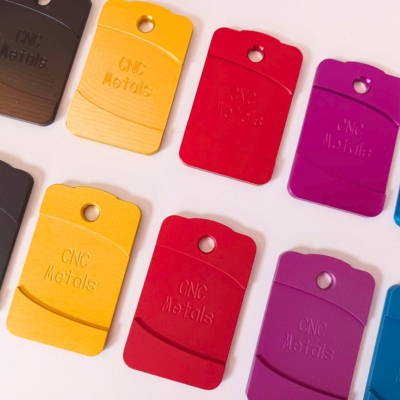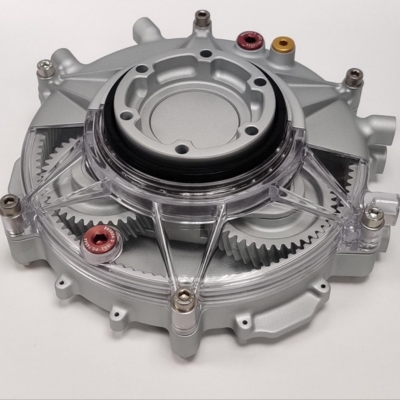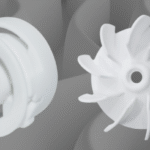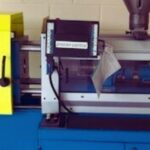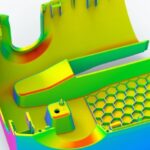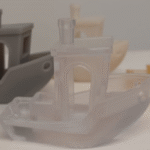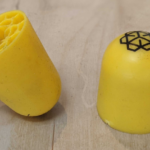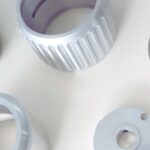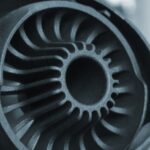- Home
- 3D Printing
- Industrial 3D Printing for Production Parts
Industrial 3D Printing for Production Parts
Industrial 3D printing has evolved far beyond its roots in prototyping. With advancements in materials and machines, it’s now a viable option for manufacturing production-grade parts in low volumes and batches.
This guide explores the capabilities and limits of industrial 3D printing technologies, including SLS, SLA, DLP, and Micro 3D Printing. It also considers when outsourcing to a professional partner makes sense – and when it might not.
SLS: Strong, functional parts
For SLS 3D Printing, we use EOS Formiga P1 machines running Matrix PA12 CR, which produces tough, stiff, chemical-resistant parts with excellent long-term stability and abrasion resistance, ideal for functional testing and end-use production parts. Since support structures aren’t required, it enables complex geometries and dense nesting within a build for efficient low-volume manufacturing.
Available finishing, at Prototype Projects, includes bead blasting, chemical vapour smoothing via PostPro SFX, dyeing (including RAL/Pantone via automated D5 workflow), lacquering, and coatings for EMI/RFI/blacking.
SLA: Accuracy and smooth surface quality
SLA uses a UV laser to cure layers of photopolymer resin, producing parts with fine detail and a smooth surface finish. At Prototype Projects, SLA production is powered by the SLA 750 system (build volume: 750 × 750 × 550 mm) alongside other Projet and Neo machines. This setup supports both high-volume workflows and large-format prints.
Materials such as Matrix Clear, Matrix Cream, Matrix Grey, and Matrix HT300, offer the aesthetics of moulded parts in ABS, polypropylene, and clear polycarbonate. SLA is well-suited to visual or dimensionally critical parts but is generally more brittle than SLS and less resistant to UV and moisture.
DLP: Fast, high-resolution resin prints
Digital Light Processing (DLP) has established itself as a high-performance photopolymer technology, delivering surface quality and feature resolution comparable to stereolithography (SLA). The process produces fine details and smooth surface finishes, reducing the need for post-processing and making it well suited to applications where dimensional accuracy and aesthetic fidelity are critical.
One of the key advantages of DLP is the breadth of advanced resins now available. The material portfolio is expanding rapidly, supporting applications from functional prototyping through to direct manufacture of end-use components, as well as tooling, moulding and casting.
Micro 3D Printing: Engineering-grade parts at micro scale
For applications demanding ultra-fine resolution, Micro 3D Printing achieves feature resolution down to a few microns by selectively curing photopolymer resin with highly controlled UV light exposure. This accuracy enables the manufacturing of complex geometries essential for medical devices, microfluidics, electronics and miniature mechanical parts. While print times tend to be much slower and materials more specialised, Micro 3D Printing unlocks design possibilities impossible with conventional scales.
When to outsource industrial 3D printing
Partnering with a specialist for production-grade 3D printing unlocks major benefits. The most obvious is access to industrial-grade machines like the SLA 750, high-resolution DLP platforms, and specialist Micro 3D Printing systems that most businesses can’t justify in-house.
You also gain expertise in file preparation, part orientation, build strategy and post-processing. A good partner can advise on which technology best suits your application and highlight potential pitfalls before production.
However, outsourcing has its downsides. You may face longer lead times, especially during peak demand. There’s also less day-to-day control over iterations. If you’re producing high volumes of the same part regularly, investing in in-house equipment may pay off in the long run.
How we can help
At Prototype Projects, we offer all four of these additive manufacturing technologies under one roof (as well as CNC Machining, Injection Moulding, Vacuum Casting, and Model Making), supported by fast-turnaround production and deep technical know-how. Whether you’re exploring SLS for low-volume enclosures, testing microfluidic designs in Micro 3D Printing, we can help you choose the right approach.
We work closely with engineers and designers across sectors, helping them bridge the gap between prototype and production. Our service is geared for flexibility, speed, and reliability – so you can push forward with confidence.
Ready to get started?
Get an instant quote for SLS, SLA and DLP 3D printed parts using Matrix. For all other requirements, please click here to request a quote.

